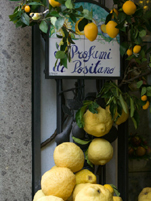Some More Positano, Please
For a very long time I have been wanting to write about this small town on the west coast of Italy. Realizing now how few articles are left until I bid farewell to Bilkent News (*sigh*), I decided to finally introduce you guys to this magical city.
I call it magical because to me it doesn't seem real. Even after visiting Positano, I still question whether such a calm yet lively and deeply mesmerizing town can even exist. To be honest, there was a moment while writing this article when I considered whether or not I really wanted to share the magnificence of Positano with everyone. The writer John Steinbeck ("Of Mice and Men," "The Grapes of Wrath") said something similar about the town in an article for Harper's Bazaar:
Nearly always when you find a place as beautiful as Positano, your impulse is to conceal it. You think, "If I tell, it will be crowded with tourists and they will ruin it, turn it into a honky-tonk and then the local people will get touristy and there's your lovely place gone to hell."
Positano is situated on the Amalfi Coast of Italy. With a landscape composed of blooming fruit trees, blossoming bushes and the view of a serene, deep blue sea, and blessed with what some call a healing climate, Positano is the ultimate destination for anyone in search of a taste of Mediterranean life.
Although small, Positano has a lot to offer its visitors. Most of the town is perched atop a hill, with clustered houses and buildings almost falling over each other. Its small streets and alleyways, lined with traditional shops and cafes, have the bustling liveliness of most tourist spots. Yet the genuine Italian cuisine and snacks on offer adds uniqueness to the menus.
Walking around the streets allows you to admire the beautiful souvenirs, such as hand-painted ceramics, along with the street food of Positano, including hand-picked berries and the mango-sized lemons that have come to symbolize the region.
 The restaurants too are an amazing place to sit back and enjoy the music of street musicians, along with a view of the sea and the glimmering lights of Positanese houses. I remember eating at a famous restaurant in Positano called Le Tre Sorelle (The Three Sisters), a family-run business that serves the best fettuccini ever!
The restaurants too are an amazing place to sit back and enjoy the music of street musicians, along with a view of the sea and the glimmering lights of Positanese houses. I remember eating at a famous restaurant in Positano called Le Tre Sorelle (The Three Sisters), a family-run business that serves the best fettuccini ever!
Positano also houses a number of the traditional churches scattered throughout Italy, including the church of Santa Maria Assunta. The building’s green dome is a landmark in the town, and the church additionally holds a Byzantine icon of the Virgin Mary, the subject of a legend about how the town got its name.
Moreover, what is really great about Positano is that it is located in the middle of the Amalfi Coast, so it is easy to travel to other cities and towns in the district, including Sorrento, Naples and Salerno, all known for epitomizing the beauty of Italian coastal towns.
Artists travel to Positano in search of inspiration; writers seek the perfect tranquility needed to foster their creativity; others travel to Positano in search of themselves: after all, it is in Positano where you can forgetand find at the same time.


